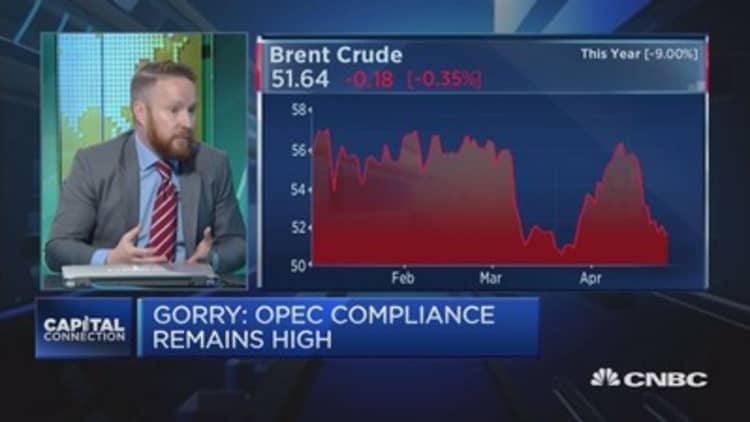Oil prices finished last week with another five-day and monthly loss, and WTI crude oil futures remain below $50/barrel on Monday, even as OPEC signaled that it may continue to restrict production during the second half of 2017.
The cartel meets on May 25 to discuss whether to extend the temporary production curbs put in place at the start of the year. Those curbs — a six-month output reduction of 1.2 million barrels per day from OPEC countries and 558,000 barrels per day from a group of non-OPEC countries — were aimed at reducing the enormous glut of inventories that had accumulated during the oil bust of the last couple of years.
Key OPEC sources recently suggested that the cuts are likely to be extended. Kuwait's oil minister, who expects the supply agreement to be renewed for another six months, said that he is satisfied with the compliance from OPEC and non-OPEC countries.
More from ETF.com:
The latest win for indexing over active
The top 10 risks of ETFs
The 3 best ways to invest overseas
All else equal, an extension of the supply reduction agreement is positive news for oil prices. Why then did oil prices fall, and why are oil ETFs — such as the United States Oil Fund (USO), down near-13 percent, and the Energy Select Sector SPDR Fund (XLE), down 10 percent — among the worst-performers this year?
The answer to that question has two parts.
The first is simply that oil prices and energy ETFs already rallied sharply last year in anticipation of reduced supply. From their lows of $26 in early-2016, crude oil prices nearly doubled. At the same time, the energy sector, as measured by the XLE, was the top-performing sector of 2016 with a 28 percent gain.
Thus, the improvement in oil market fundamentals (including the OPEC production cuts, which were first revealed in September), were largely baked into prices by the end of 2016.
The second reason oil prices and energy ETFs are struggling is that the oil market rebalancing that OPEC is attempting to hasten is being delayed by rising U.S. production.
The Energy Information Administration reported that last week, U.S. output of crude oil climbed to 9.3 million barrels per day, the highest level since Aug. 2015 and up 800,000 barrels per day from where it was as recently as October.
That puts U.S. production on track to surpass the 30-year highs of 9.6 million barrels per day reached in 2015.
OPEC could still succeed
U.S. producers are, in effect, throwing a monkey wrench into OPEC's plans. But that doesn't mean the plan won't succeed. According to analysts at Citigroup, inventories will eventually draw down as the OPEC cuts continue.
"With a continuation of the OPEC and non-OPEC producer deal in the second half of 2017 and the expected associated inventory draw-down, we expect oil prices to move above $60 a barrel by the second half of the year," said analysts at the bank.

In its latest Oil Market Report, the International Energy Agency (IEA) largely agreed with the idea that the oil market was close to turning the corner. "It can be argued confidently that the market is already very close to balance, and as more data becomes available this will become clearer," wrote the IEA.
If Citi's bullish forecast calling for oil prices above $60 is right, energy ETFs are likely to come along for the ride. Funds like XLE, the SPDR S&P Oil & Gas Exploration & Production ETF (XOP), and others — which are currently deep in the red on a year-to-date basis (XOP is down 15 percent) — won't stay down for long if oil indeed tops $60, a level it hasn't seen in almost two years.
However, even bullish Citigroup cautions that rising U.S. production is a "dark cloud hanging over the market" and that failure to extend OPEC's production cut agreement will result in "precipitously" lower oil prices.
It's up to investors to decide whether they're willing to face those risks in hopes that the bullish scenario of $60+ oil pans out.
—By Sumit Roy, ETF.com




